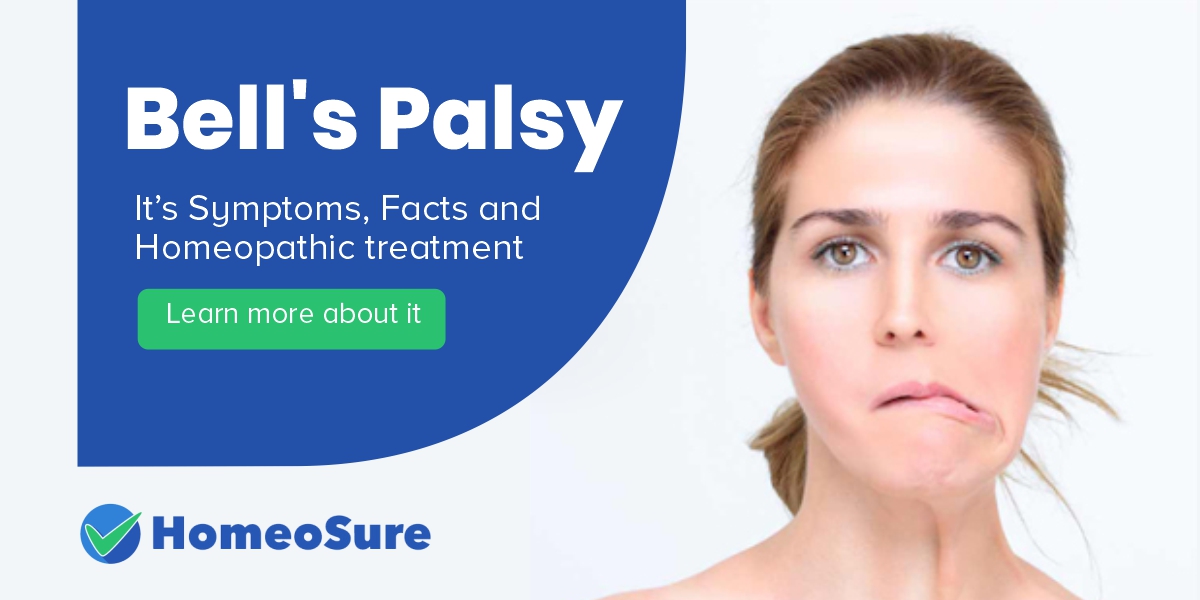Bell's Palsy
Bell’s Palsy is an acute facial paralysis usually affecting only one half of face in most people. It is sudden with rapid onset and fast progression. Symptoms usually develop overnight. Facial nerve is affected resulting in drooping of face of the same side.
It is an acute disease and is responsible for more than 80% cases of acute facial paralysis. Both men and women are equally affected by it and can affect any age group. It is more common from adulthood till old age. People suffering from Diabetes or those prone to colds and flu are more susceptible to it. It is not a contagious disease.
CAUSES OF BELL’S PALSY
The cause of Bell’s palsy is not clear. Most cases are thought to be caused by the herpes virus that causes cold sores. In most cases of Bell’s palsy, the nerve that controls muscles on one side of the face is damaged by inflammation. Many health problems can cause weakness or paralysis of the face.
SYMPTOMS OF BELL’S PALSY
- Sudden weakness of one side of face
- Drooping of affected side of face
- Numbness of affected side of face with twitching
- Difficulty in closing eye and mouth on affected side of face
- Drooling of saliva
- Increased or decreased formation of tears
- Pain around ear
- Intolerance to loud noises
- Change in taste
- Difficulty in eating or drinking
COMPLICATIONS
Around 3 in every 10 people with Bell’s palsy will continue to experience weakness in their facial muscles, and 2 in 10 will be left with a more serious long-term problem.
Complications may include:
- Persistent facial weakness
- Eye problems
- Difficulty with speech, eating and drinking
- Reduced sense of taste
- Facial muscle twitching
- Bell’s palsy may reoccur in up to 14% of people, especially if there is a family history of the condition
MANAGEMENT OR SELF CARE
Patients with bell’s palsy can improve early with certain measures:
- Facial exercises: Such as tightening and relaxing your facial muscles-may make those muscles stronger and help you recover more quickly. Massaging your forehead, cheeks, and lips with oil or cream may also help
- Eye care: Difficulty in blinking or closing eye fully may make eye dry. A dry eye can lead to serious vision problems
- To help protect the eye and keep it moist, use your finger to close and open your eyelid often throughout the day
HOMEOPATHIC TREATMENT
Homeopathic treatment has known antiviral activity. It is also targeted towards healing of nerve damage in case of traumatic cases of Bell’s palsy. People with Bell’s palsy recover completely within 3 to 9 months. Yet, the most important factor in treatment is to eliminate the source of the condition.
Homeopathic treatment is targeted towards UPROOTING THE DISEASE and ensuring health with no side effects. For prescribing to an individual, a PLAN OF TREATMENT is followed which involves:
- GETTING THOROUGH UNDERSTANDING OF CASE which includes complete case taking (analyzing patient as an individual) along with patient history and family history
- DIAGNOSIS OF PATIENT AND DISEASE
- INDIVIDUAL ASSESSMENT OF THE CASE
- PRESCRIBING THE MOST SUITABLE INDIVIDUAL CONSTITUTIONAL REMEDY
